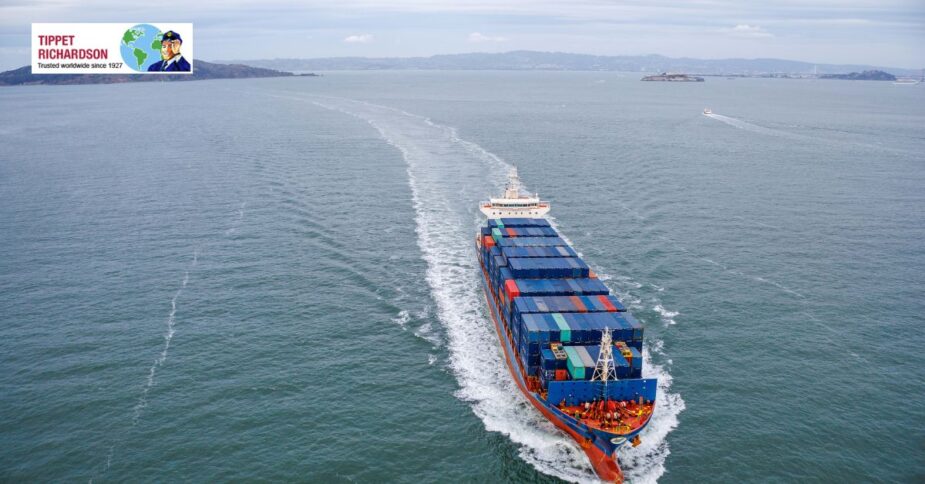Moving internationally is an exciting adventure, but it also comes with a long list of important decisions that can impact the success of your relocation. One of the most critical choices you’ll face is selecting the right container size for your move. Getting this right ensures your belongings arrive safely, your shipment stays within budget, and your overall moving process runs smoothly. This container size guide for international moving aims to serve as your reliable compass through this vital part of the planning stage.
Choosing the appropriate container size is far more than just picking a box to ship your possessions in. It involves balancing several factors—from the volume of your goods to the type of sea freight options that best suit your timeline and budget. Whether you’re considering less-than-container-load (LCL) shipments to share space and reduce costs or full-container-load (FCL) for greater security and ease, understanding these distinctions is pivotal. Making an informed container choice minimizes unnecessary expenses and prevents delays during transport.
At Tippet Richardson, we’ve proudly served Toronto families since 1927, mastering the complexities of international moves. Our experienced team understands that every move is unique, and so is the container size requirement. We take the time to review your inventory, evaluate your specific destination’s and recommend the best container option tailored to your needs. Trusting experts like Tippet Richardson simplifies your relocation journey and gives you confidence that your precious belongings are in capable hands.
This comprehensive container size guide international moving resource will walk you through key considerations, explain sea freight details including the LCL vs FCL debate, and offer practical tips for choosing the perfect size. By following this guide, you’ll be better equipped to make strategic choices that safeguard your items and optimise your move. With the proper container size, your international relocation can become a well-coordinated, effortless process governed by clarity rather than stress.
Understanding Container Size Guide International Moving: Key Considerations
What Is a Container Size Guide and Why It Matters
A container size guide international moving is an essential resource that helps you determine the ideal shipping container volume and dimensions for your move overseas. Unlike local moves where space is more flexible, international shipments require precise container selection to align with shipping regulations, vessel capacities, and cost structures. Using a container size guide tailored for international moving allows you to balance the space you need against the price you pay. Overestimating container size wastes money on unused space, while underestimating can cause delays or force costly last-minute adjustments.
Factors Influencing Container Size Choice
Selecting the correct container size depends on several key factors that interplay to shape your final decision:
– Volume and Nature of Belongings: The total weight and cubic volume of your furniture, boxes, and special items play a primary role. Bulky, lightweight objects differ greatly from compact, dense goods in how they fill container space.
– Shipping Budget: Your budget sets boundaries on container options. Choosing between less-than-container-load (LCL) and full-container-load (FCL), for example, relates directly to how much space you need versus cost per cubic metre.
– Mode of Shipping: While sea freight is the most common and cost-effective for international moves, air freight is faster but restricts container sizes and increases costs.
– Customs and Destination Regulations: Some countries impose specific container standards or restrict certain cargo types which can influence your container size and packing methods.
– Timeline and Flexibility: Longer transit times might allow you to consolidate shipments and choose larger containers, whereas urgent moves might favour smaller shipments with quicker handling.
How Tippet Richardson Supports Toronto Customers With Container Size Decisions
For Toronto residents planning their international relocation, Tippet Richardson offers unmatched expertise in consulting on container size selection. Since 1927, we have combined decades of experience with detailed knowledge of global shipping routes, container standards, and evolving customs requirements. Our process begins with a thorough assessment of your household inventory, understanding special handling needs and your move destination’s particularities.
Through personalized consultations, we identify whether LCL or FCL sea freight options best match your volume and budget. We help you forecast costs tied to different container sizes and recommend strategies for optimising space. Tippet Richardson’s packing professionals also provide guidance on how to arrange items to maximise container efficiency while enhancing protection.
By partnering with Tippet Richardson in Toronto, you gain a trusted advisor who demystifies container size decisions, minimizing surprises and delays. Our tailored approach ensures your international move not only meets your expectations but reflects years of expert insight into container size guides for international moving.
Sea Freight Options: Understanding LCL vs FCL for International Moves
Defining Sea Freight and Its Role in International Moving
Sea freight is the cornerstone of international shipping for household and commercial moves, especially when transporting large volumes of goods across oceans. It involves the transportation of cargo aboard container ships, which is typically more cost-effective than air freight for substantial shipments. The economies of scale in sea freight allow you to ship heavier or bulkier items over long distances without a prohibitive price tag. For most international moves, sea freight options offer flexible container sizes, reliable scheduling, and a balance between cost and transit time.
Choosing the right sea freight option is a critical step in your container size guide international moving. Understanding the differences between the main sea freight options, especially less-than-container load (LCL) and full container load (FCL), ensures you select the best fit for your move’s size, timeline, and budget.
What Is Less than Container Load (LCL)?
Less than container load (LCL) is a shipping option where your goods occupy only part of a container, sharing space with other shipments. This method is ideal when your inventory volume doesn’t justify renting an entire container. LCL provides flexibility and cost savings by enabling you to pay only for the cubic space your belongings occupy.
Typically, LCL shipments are consolidated at a warehouse, loaded carefully alongside other cargo, and then transported together across the sea. This arrangement suits smaller moves, budget-conscious customers, or those needing to ship shipments that don’t easily fill conventional container sizes. However, because your goods share space with others, transit times can be longer due to additional handling and consolidation processes. Also, the risk of damage can slightly increase given the multiple loading and unloading sequences involved. Still, experienced international movers like Tippet Richardson expertly manage these complexities for smooth LCL shipments.
What Is Full Container Load (FCL)?
Full container load (FCL) means renting the entire container exclusively for your belongings. This option accommodates large shipments that can fill or nearly fill standard container sizes (such as 20ft or 40ft). Having a dedicated container offers significant advantages in terms of security, container control, and usually faster transit times since consolidation steps are unnecessary.
With FCL, you have sole responsibility over how the container is packed and loaded, which often translates to better protection for fragile or high-value items. Although initial costs might seem higher than LCL, FCL can be more cost-effective when shipping large volumes, as the price per cubic metre tends to decrease with increased usage of container space.
Full container loads also reduce the risks associated with sharing container space—fewer stops, less handling, and simplified customs clearance—making it a preferred option for customers who prioritise safety and efficiency over smaller upfront investment. For moves organized through trusted Toronto movers like Tippet Richardson, counselling on when to choose FCL ensures your international move achieves the best balance of cost, convenience, and cargo protection.
Comparing LCL vs FCL: Which Container Size Fits Your Move?
When choosing between LCL and FCL, several factors come into play that closely tie into your container size guide international moving:
– Cost: LCL allows payment only for the space used, making it economical for smaller moves. FCL might cost more upfront but can be cheaper per volume if you have enough goods to fill a container.
– Timing: FCL shipments tend to be faster; LCL often requires additional handling for consolidation and deconsolidation, adding days or weeks to your transit schedule.
– Space and Volume: Moves with limited inventory naturally fit LCL. Once your shipment volume approaches or exceeds half a container (roughly 10-15 cubic metres), FCL usually becomes the more efficient option.
– Security: FCL offers a locked, sealed container dedicated solely to your possessions, lowering the risk of damage or loss versus LCL’s shared environment.
– Complexity: LCL involves coordination among different shippers and is subject to more complex while FCL simplifies the process.
In Toronto, Tippet Richardson helps customers assess these variables by reviewing shipment size, move urgency, and budget constraints, guiding them to the best sea freight option. Our container size guide international moving expertise ensures that whether you choose LCL or FCL, your move proceeds with optimal space usage, cost-effectiveness, and reliability.
Read Also: Vehicle Shipping Internationally: What You Need to Know
Choosing the Right Container Size for Your International Move
Standard Container Sizes Explained
When planning an international move, understanding standard container sizes is key to selecting the right fit for your belongings. The most commonly used containers are the 20-foot and 40-foot shipping containers. A 20-foot container typically measures about 20 feet in length, 8 feet wide, and 8.5 feet tall, providing roughly 33 cubic metres of usable space. This size suits smaller to medium moves, such as a one- or two-bedroom household.
A 40-foot container doubles the length to 40 feet but retains the same width and height as the 20-foot unit. This size offers around 67 cubic metres of capacity, making it ideal for larger households, families, or clients shipping bulky items. Variations also exist, such as high-cube containers that add approximately an extra foot in height, perfect for taller items or maximizing vertical space. Recognizing these dimensions helps you align your inventory with container space accurately in your container size guide international moving.
Matching Your Inventory Volume to Container Size
Determining how much container space your belongings require is arguably the most important part of the moving process. Overestimating container size can lead to paying for unused cubic metres, while underestimating may force additional shipments or last-minute changes.
To match your inventory volume, start by creating a detailed inventory list, including furniture, boxes, appliances, and any specialty items. Use online volume calculators or consult professionals who can translate your inventory into cubic metres. Tools like rough cube calculators and floor plans allow you to estimate the footprint your goods will cover inside a container.
Opting for sea freight options, keep in mind packing materials and cushioning also occupy space. For Toronto customers partnering with Tippet Richardson, we provide in-depth pre-move assessments and inventory evaluations to recommend the most appropriate container size—preventing costly overloading or underutilization.
Tips for Maximizing Container Space Efficiency
Maximizing your container space not only saves money but also protects your items during transit. To achieve this, packing density and strategic load distribution matter immensely. Begin by disassembling large furniture to reduce bulk and create stackable units. Use uniform-sized boxes for easier stacking and ensure heavier items go at the bottom for stability.
Professional movers like Tippet Richardson in Toronto employ expertise in strategic packing, placing bulky or oddly shaped items in container corners and filling gaps with smaller goods. They also advise on using durable packing materials and securing items properly to avoid shifting during the voyage. Efficient loading reduces container size needs and minimises risk of damage—both critical factors in a container size guide international moving.
Special Considerations for Fragile or Oversized Items
If your shipment includes fragile objects—such as glassware, ceramics, electronics—or oversized items like pianos or artwork, your container size choice requires special attention. These items often demand customized packing solutions, extra padding, or custom crating, all of which can affect space requirements.
While smaller containers might seem appealing for cost savings, sometimes a larger container or FCL sea freight option provides better security and handling for delicate or bulky goods. Discussing your unique items with experienced movers like Tippet Richardson ensures proper container selection and packing strategies that mitigate damage risks, adherence to shipping regulations, and tailored. This careful planning forms an essential part of an effective container size guide international moving, guaranteeing your valuables arrive safely.
Cost Implications of Container Sizes in International Shipping
How Container Size Affects Shipping Costs
In international moving, container size directly impacts your shipping costs in multiple ways. Freight charges are typically calculated based on the container size and the volume or weight of your goods. Larger containers, such as the 40-foot type, command higher base costs than smaller 20-foot containers. However, if you have a substantial amount of belongings, utilizing a larger container often brings a better price-to-volume ratio.
Surcharges can further influence total expenses. These may include fees for fuel, peak-season demand, port handling, and security. Larger containers may incur higher surcharges due to their weight and dimensions, while smaller containers or shared loads may have fewer surcharges but possibly additional fees elsewhere.
Handling fees related to loading and unloading the container also play a role. Larger containers require more labour and time to pack and unpack, resulting in increased handling costs. Additionally, docking fees at some international ports vary by container size.
Understanding how your container size choice affects these costs ensures you stay within budget while optimising shipment efficiency—a core element in any container size guide international moving plan.
Additional Costs Associated With LCL and FCL
Beyond the basic freight and handling fees, less-than-container-load (LCL) and full-container-load (FCL) shipping options carry their own additional cost considerations. LCL shipments often involve consolidation and deconsolidation fees, as multiple shippers’ goods are combined and separated at warehouses or ports. This process can add handling charges, storage fees if shipments are delayed, and administrative costs, increasing your overall spending.
FCL shipments, while usually simpler may have minimum charges even if your belongings don’t fully occupy the container. This minimum commitment can make FCL more expensive if your inventory doesn’t justify the size. Also, special equipment or permits necessary for oversized containers may invoke extra fees.
Toronto international movers like Tippet Richardson help unpack these details so your container size guide international moving reflects all variable fees, helping you avoid unexpected charges.
How to Budget Smartly for Your Container Size
Budgeting for an international move involves anticipating all container-related costs, including those tied to container size selection. Start by discussing your full inventory with experienced movers who can provide detailed cost estimates based on container dimensions, sea freight options, and your timeline.
Consider that overestimating container size may lead to paying for unused space, whereas underestimating might necessitate booking second shipments or incur expedited fees. Engaging with experts such as Tippet Richardson in Toronto means receiving customised advice that aligns your budget with practical container sizes.
Additionally, ask about ways to optimize packing and loading efficiency to reduce container size needs, translating to cost savings. Factor in potential surcharges, customs duties, insurance, and third-party handling fees.
By following a strategic budgeting approach guided by a thorough container size guide international moving, you can plan your finances confidently and avoid surprises, making your international relocation as seamless as possible.
Read Also: Customs Clearance International: Steps for Hassle-Free Move
Preparing Your Shipment with the Right Container Size in Toronto
Packing Services and Container Loading Support
Efficient packing is critical to maximizing container space and safeguarding your belongings during transit. Tippet Richardson offers professional packing services in Toronto that utilize industry-leading materials and techniques to protect fragile items and optimize space usage. Our trained packing teams work methodically to disassemble bulky furniture, wrap delicate articles, and uniformly pack boxes to ease container loading.
When it comes to loading the container, our experts apply strategic loading methods that enhance stability and prevent shifting during shipping. Proper weight distribution and secure fastening inside the container not only reduce the chance of damage but also allow for smaller container footprints—translating to cost savings. By entrusting packing and loading to our skilled professionals, you ensure your shipment is efficient, safe, and well-organized within the selected container size.
Documentation and Customs Considerations for Container Shipping
International moves require meticulous documentation and adherence to customs regulations, both of which influence container choice and scheduling. Tippet Richardson guides Toronto customers through preparing essential paperwork such as bills of lading, packing lists, customs declarations, and import permits. Proper documentation accelerates customs clearance, reducing delays that might otherwise affect your container’s transit timeline.
Certain destinations impose restrictions on container contents or require specific certifications, impacting what can be safely packed and shipped. Our specialists stay up to date with global customs policies and advise on container packing to ensure compliance, preventing fines or shipment holds. By integrating customs expertise with your container size guide international moving, Tippet Richardson streamlines the paperwork process so your shipment flows smoothly across borders.
Timeline: Scheduling Your International Container Shipment
Planning your move schedule to coordinate with container availability and transit times is vital for a stress-free international relocation. Tippet Richardson works closely with customers in Toronto to establish realistic timelines that factor in container booking windows, port schedules, sea freight voyage durations, and customs processing.
For LCL shipments, additional lead time may be necessary due to consolidation and deconsolidation activities, while FCL moves typically allow for more direct transit routes. Understanding these distinctions helps in setting proper dates for packing, loading, departure, and delivery to your new home abroad.
Our team monitors each phase, providing updates and managing contingencies to keep your shipment on track. With this detailed scheduling support, you can coordinate other moving-related tasks confidently, knowing that your container size and sea freight options are optimally aligned with timing considerations.
Wrapping Up
Choosing the perfect container size is a fundamental step toward ensuring a smooth and successful international move. When you work with Tippet Richardson, Toronto’s trusted international movers since 1927, you benefit from decades of experience and personalised guidance tailored to your unique shipment needs. Whether you’re navigating sea freight options or considering the differences between LCL vs FCL, this container size guide international moving has equipped you with the knowledge to make confident, informed decisions.
By selecting the right container size, you optimise shipping costs, enhance packing efficiency, and reduce risks of delays or damage during transit. Beyond just choosing a container, Tippet Richardson provides end-to-end support — from expert advice on container selection to professional packing and loading services designed to protect your belongings and maximise space.
Understanding essential regulations, documentation, and timelines further smooths your move, allowing you to plan with certainty and convenience. Trusting Toronto’s experienced movers means you’re not alone in this complex process. With Tippet Richardson by your side, your international move becomes a well-orchestrated journey, backed by expertise, reliability, and a commitment to your peace of mind every step of the way.





